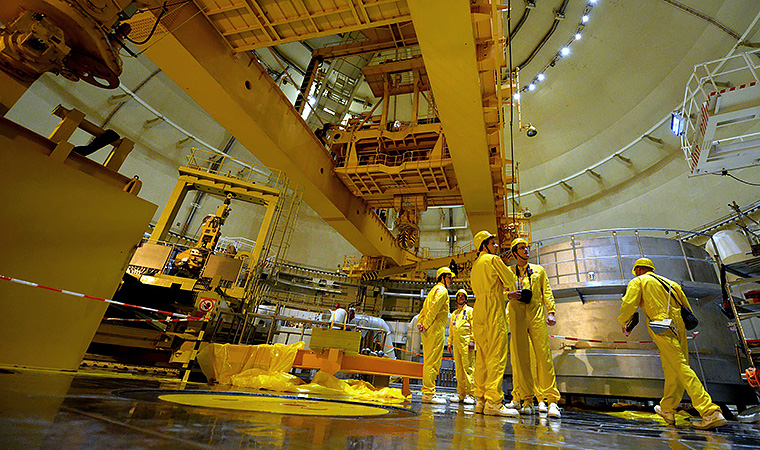
TVEL to Supply Secondary Neutron Sources to Temelin
back to contentsAfter succeeding in tender, Rosatom had to complete the contractual works to the highest standard and in due time. What was at stake here was not only further cooperation with overseas nuclear power plants, but the credibility of the Russian nuclear industry on the whole. Several Rosatom divisions were involved. These are Afrikantov Experimental Design Bureau for Mechanical Engineering in Nizhny Novgorod, machine-building plant in Elektrostal, High-technology Research Institute of Inorganic Materials (VNIINM) in Moscow, and Leipunsky Institute of Physics and Power Engineering in Obninsk.
VNIINM had one of the most difficult tasks, i.e. to develop the process and produce several thousands of pellets for secondary neutron source cores in accordance with the customer and requirements and in due time stipulated in the contract, as well as to carry out the assembly of pellets with enclosure for subsequent operations performed by Leipunsky Institute and machine-building plant.
In Due Time
“Secondary neutron sources are used for the additional neutron production when reactor is in subcritical or near critical state or during reloading operations, replacement of the spent nuclear fuel with new fresh fuel assemblies. It is one of the most critical points in reactor power control. These are the secondary neutron sources that make it possible to control reactor under these operating conditions providing full safety,” Vladimir Sorokin told. He is VNIINM chief specialist in charge of production of the secondary neutron source cores.
In SNS pellets containing nuclear clean beryllium and antimony, photoneutron reaction occurs resulting in production of the much needed neutrons by beryllium nuclei under the gamma-ray irradiation emitted by antimony isotopes.
It was made possible thanks to many years of experience VNIINM has with such materials as beryllium, as well as thanks to a huge technological expertise in the field of powder metallurgy. One of the major tasks was high performance. VNIINM had to produce 4,306 pellets. In order to meet the deadline in production of secondary neutron source pellets for Temelin, the institute had to reach the production target rate of 100 pellets per day.
The specialists worked in two shifts, even during the New Year holidays, in order to produce the necessary amount of high quality pellets. The key fact was that VNIINM managed to establish the scientific basis and develop the design documents for press tools, which were produced by machine-building plant. It managed to produce pellets, fit them into the sealed bottles, and deliver them to the machine-building plant in due time as provided in the contract. In April 2015, TVEL plans to deliver the finished assemblies with secondary neutron sources to Temelin nuclear power plant.
Top Quality
The batch of pellets meets the highest quality standards. “It is an excellent result for such large-scale production,” – Alexander Morozov, Deputy Director of VNIINM Fuel Element Department, told. “It took some time for our scientists to find the optimal solution for this task. At the beginning the repeated attempts did not give us the desired effect. The material was hard to process. The requirements for pellets were very strict (their size, density and content of beryllium and antimony were strictly defined).”
VNIINM Chief Expert Daniel Tokmajyan says, “We understood it well that we walk a tightrope. Everything might have happened. Matrix may have been damaged, and it needs almost a month to produce it. We did not have much time for so many tasks. But if we refuse to do it, then no one else can do it.”
The Institute of Non-Organic Materials has not produced pellets with such ratio of beryllium and antimony and such size before, VNIINM General Director Valentin Ivanov was well aware of the importance of this work for the Institute and for fuel company, therefore he insisted on the participation of the institute in this project. “VNIINM is an research centre with a team of professionals able to deal with any tasks. The primary objective we face is to promote our developments and technologies in the domestic and international markets,” he said.




